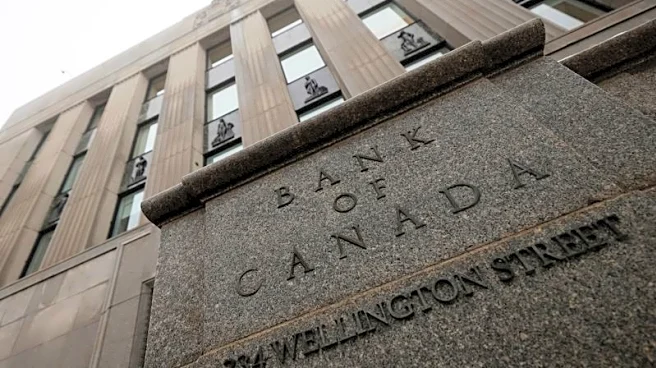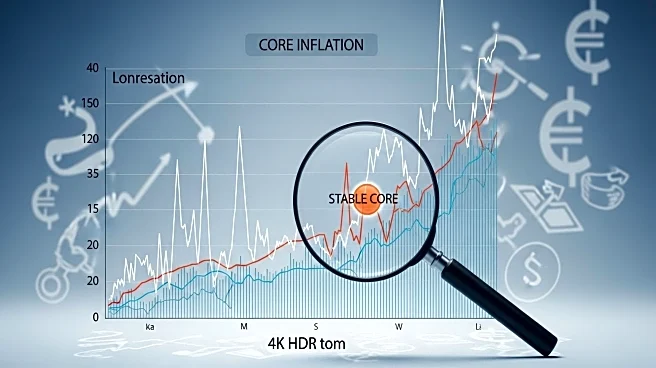What's Happening?
The Bank of Canada is set to release baseline projections for the economy and inflation in its upcoming monetary policy report in October. This decision follows a period of uncertainty regarding U.S. tariffs imposed by President Trump, which had previously led the bank to refrain from providing definitive estimates. The central bank recently reduced its key policy rate to 2.5%, the lowest in three years, and indicated readiness to cut rates further if economic risks increase. The rate-setting committee noted that inflationary pressures are subsiding, partly due to the removal of most counter-tariffs on U.S. goods. However, concerns remain about the impact of slower population growth and a softer labor market on household spending and business investment.
Why It's Important?
The Bank of Canada's decision to resume baseline projections reflects a stabilization in tariff-related uncertainties, which have been a significant factor in economic planning. The potential for further rate cuts highlights ongoing concerns about economic growth and inflation. The impending renegotiation of the free-trade agreement between the U.S., Mexico, and Canada adds another layer of uncertainty, potentially affecting business investment and economic recovery. These developments are crucial for stakeholders in the Canadian economy, including businesses and consumers, as they navigate the impacts of international trade policies and domestic economic conditions.
What's Next?
The Bank of Canada's upcoming monetary policy report will provide insights into its economic outlook and potential policy actions. The renegotiation of the free-trade agreement could influence future economic projections and policy decisions. Stakeholders will be closely monitoring these developments to assess their impact on investment and growth. The central bank's readiness to adjust rates further indicates a proactive approach to managing economic risks, which will be critical in maintaining stability amid ongoing uncertainties.











